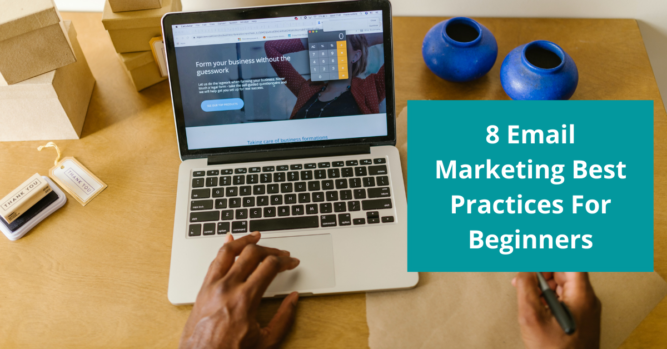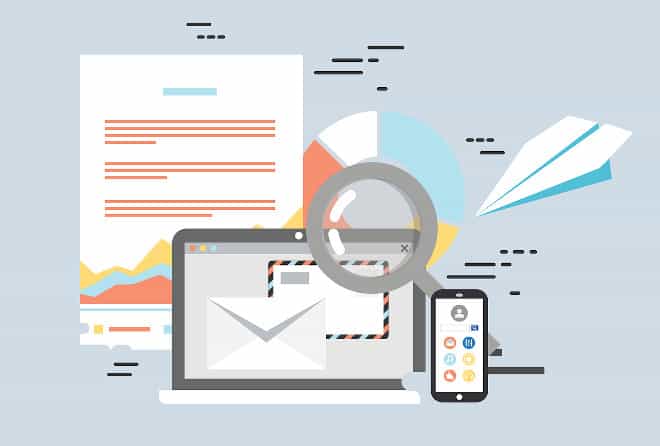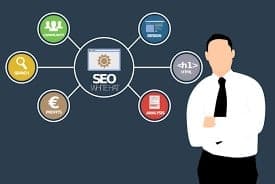
8 Email Marketing Best Practices For Beginners
Email campaigns are a pretty great way to generate engagement for your company. Even though there are more modern ways to market your business on the web, email campaigns are still excellent at getting you new customers and introducing people to your brand.
In this article, I am going to share 8 email marketing best practices for beginners.
If you’re interested in running the best email marketing campaign possible, we’re here to share some of the best email marketing practices to use if you want to generate tons of leads and maximize your revenue.
What Are The 8 Email Marketing Best Practices for Beginners
1. Test Your Content
Before getting your campaign started, always test your content out! You don’t want to send out a bunch of emails only to find out after the fact that they don’t work.
Always check and make sure there aren’t any problems with your email like broken links or missing information.
Your emails might also appear different to customers depending on what their email provider is, so test your emails with a bunch of different email providers and on multiple devices.
Technical glitches aren’t the only thing you need to look out for, though. You should also test your content for clarity.
For example, if you send a test email to a co-worker and they’re unable to figure out what your call to action is, you might need to rewrite your email to make it easier to understand.
2. Use the Right Sender Name
Believe it or not, the name you pick for your email address can make all the difference when getting people to open your emails.
The name people see when they get an email from you has to stand out and be a trustworthy name. Your sender name is kind of like a separate brand name when it appears in the context of someone’s inbox.
Your sender name should be something basic and easily recognizable. If your company is a smaller company, it’s a great idea for your employees to use their first names in their company email addresses (“james@(company name).com” or “James from (company name)” are good examples).
This can make emails from your company feel much more personal and engaging.
If your company is a bit bigger, it makes more sense to include your company’s name in your sender’s name (like “(Company name) Newsletter” or “(Company name) Customer Support”).
Either way, your customers should have no confusion about who they’re getting their emails from.
One thing you absolutely never want to do is include the words “no reply” in your address or sender name. The CAN-SPAM Act in the U.S. prohibits email marketers from denying customers the ability to opt-out of emails.
Since customers can’t respond to “no reply” emails, this makes them unable to unsubscribe from these emails, which is illegal.
3. Make Your Emails Easy to Read
Everything about your email should be as short as possible. This includes the subject line and the content of the email both.
You want to get your message across as quickly and efficiently as possible because let’s be real; no-one wants to spend more than a minute or two reading an email.
Some ways you can get your message across quickly are to put it right up front in the headline or the pre-header text of your email.
You can also break down your content into lists or bullet points, which are easy to skim through but still give you a lot of info.
But aside from making your emails easier to read in terms of their length, you should also look at it from the perspective of accessibility.
Over a billion people around the world have some form of visual impairment. Odds are, some of those people are subscribed to your emails.
If their visual impairment is bad enough, they might be completely unable to read your emails without a screen reader.
If someone is using a screen reader, you can add ALT text to any images in your email. This allows the screen reader to read a description of the images. Also, make sure the color contrast in your email doesn’t make any text unreadable.
4. Use a Professional Marketing Tool
Running an email campaign might seem like the sort of thing you could do with just your own company domain and something like Apple Mail or Outlook.
And sure, you probably could run a decent campaign with just that. But you’ll always be at a disadvantage when it comes to what you can do with a professional email marketing service.
There are tons of them out there, and many of them come with handy email builders that help you design great-looking emails every time.
They can also track your customer’s engagement rates to see who is responding the most to your emails, and are awesome when it comes to helping your emails avoid people’s spam filters.
Professional email marketing services are capable of a great many other functions besides these. They’re essential to invest in if you want your email campaign to be as successful as possible.
5. Don’t Buy Contact Lists from Third Parties
This may be somewhat obvious, but if you’re considering buying a bunch of people’s email addresses from a third-party data collector to get a jump-start on your campaign… just don’t.
Not only is emailing people without their consent illegal throughout Europe, but it’s also just a poor idea in general to email people who haven’t interacted with your company’s website or other social media.
Reaching out to people who have no interest in your brand is a great way to get zero engagement.
If you build up your list of contacts organically, you’ll have an audience far more willing to engage with your brand and invest in your products.
6. Segment Your Audience
It’s important to keep track of your audience engagement rates and to segment your audience accordingly.
It’s definitely more convenient to send out mass emails to every single one of your contacts, and sometimes it may be good at generating sales, but it’s not nearly as effective as having multiple campaigns that target different segments of your customers.
If you can identify who engages with your emails the most, or who buys the most products from you, then you can set up targeted campaigns that are way better at generating sales than general-purpose campaigns.
By personalizing your campaign for a particular segment, you’re able to connect with them more deeply as a brand and be able to give them more of what they want.
7. Make Your Content Look Legit
You’ll want to make your content look like it was written by a real human and not generated by some corporate robot. Not only is this better at getting your subscribers to engage with your emails, but this will also help you avoid many spam filters.
Making your subject line personalized and relevant is a great way to get more people to open your emails. Ideally, you should collect each subscriber’s first name when they opt-in to your emails, and you should include their name in the subject line of each email you send them.
Avoid using all caps, gimmicky words or phrases, and too many exclamation points (for example, anything like ULTRA HOT DEALS LIMITED TIME ONLY!!!!). Spam filters will look for stuff like this, and besides, it just looks unprofessional.
Instead, keep your subject lines as short as possible, but try to summarize the content of the email or highlight notable details of the email.
The content of your emails themselves should be just the same, as short as possible, but informative and clear. Also, if you often tend to use visuals in your emails, make sure your visual branding is consistent with every email you send.
Some spam filters are far more aggressive than others and will flag emails based on images or specific content. If you want to find out the best way to format your emails for the best deliverability, you’ll probably want to perform some A/B testing to find out what emails are generating the most responses.
8. Send Your Emails at the Right Time
The time at which you send out emails matters a fair amount as well. There are a couple of two-hour timeslots in the day that, on average, tend to be the best time to send emails in terms of getting immediate engagement: 9 a.m. to 11 a.m., and 3 p.m. to 5 p.m.
As for what days to send out emails, it doesn’t matter as long as you don’t send them out on the weekend.
Of course, these are just general guidelines, and “the right time” in all likelihood depends on who your audience is.
The great news is some professional marketing tools allow you to find out when your audience is engaging with your emails the most, and help you pick the best time to send out emails.
Summary
Email marketing campaigns are still a great way to get people interested in your brand, but there’s a lot that goes into running a successful one.
But if you apply the practices above to your campaign, you’ll be able to create awesome, professional-looking emails that will generate tons of new engagement. And the best part is, email campaigns have shown to be amazing at generating huge returns on investment if they’re done right.
There’s really no reason not to get started on an email campaign if you haven’t already! Whether or not you own a large or a small company, you have nothing to lose and everything to gain by investing in email marketing.
Recommended for you
Best Email Marketing Campaign Examples (2022)
Best Email Marketing Tips & Tricks in 2022








